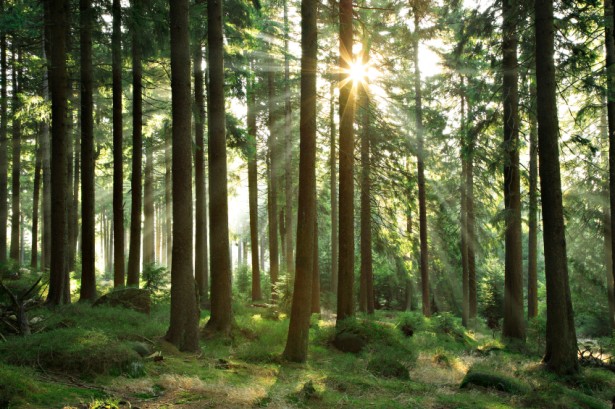Yesterday evening on Twitter, I had this exchange:
@drgrist Yes. Forget for a moment about the energy journalism we have. What, in @drgrist‘s view, is the energy journalism we need?
— Jay Rosen(@jayrosen_nyu) October 4, 2012
That’ll teach me to ask for homework! (If you’re not familiar with Jay Rosen, you oughtta be — he’s the smartest press critic going.)
First, as I’m sure Rosen knows, there is no singular “energy journalism,” only various tribes with various beats. A quick taxonomy couldn’t hurt.
There are finance and business journalists who cover energy as a commodity business, tracking global supply and demand flows, prices, futures trading, all that sort of stuff. There are business and tech journalists who focus on cleantech. There are environmental journalists, who tend to cover energy (when they do it) through the lens of enviros vs. polluters. And there are political journalists who cover energy as a campaign and/or policy issue, sometimes as a specialty, more often as part of a portfolio.
There are journalists who straddle more than one of these tribes, but they are fairly rare — mostly what you have is a blind men and elephant situation. Each tribe has its own ambit, tropes, and habits of thinking, which persist through sheer vocational inertia.
What I’d like to see in all these varieties of energy journalism is a little bit more systems thinking, a greater sense of context. Humanity’s relationship with energy is changing in fundamental ways and lots of the familiar frames for energy coverage no longer make much sense, or at least are woefully inadequate.
Here are the three great energy challenges of the 21st century:
- Maintain safe and reliable energy supply to developed countries, where demand is leveling off and infrastructure is aging.
- Supply energy to the developing world, where demand is absolutely exploding, and to the one in three people in the world who have no reliable access to energy at all (“energy poverty”).
- Rapidly and substantially reduce emissions of greenhouse gases from fossil fuels.
Lots of energy journalists, especially of the political variety, operate as though only No. 1 existed. Biz and tech journalists are more likely to grapple with No. 2. As for No. 3, that’s an “environmental story” and so it’s left to environmental journalists, a tribe that has traditionally been science-focused and keenly, self-consciously nonpartisan.
This is the situation in energy journalism these days, and it isn’t serving readers well.
The combination of No. 2 and No. 3 puts us in an incredible bind as a species. But we are not used to thinking as a species, much less to planning and coordinating as one. Journalists talk to their readers in terms of economic and political jockeying among wealthy nation-states, not in terms of our shared fate.
If Nos. 2 and 3 were matters of altruism, like the proverbial starving kids in Africa, then inattention might be a matter for scolds but not a professional failing. But they aren’t. In the 21st century, how the developing world supplies its thirst for energy and how much of our “carbon budget” gets spent are going to directly shape the economies and social well-being of rich Westerners. There are now enough humans on earth, particularly enough rich humans, to affect basic global biospheric systems. And temperature, precipitation, agricultural yields, and disease vectors affect everyone. Neglecting those global effects is journalistic malpractice.
The age of easy, careless fossil-fuel abundance is over. But Americans aren’t hearing that. Energy journalists aren’t putting the pieces together. In their defense, politicians and other cultural leaders aren’t either. Nobody is taking climate seriously. We are sleepwalking forward together.
What’s needed, then, is a knack for synthesis, for pulling these facets of energy together into a bigger picture. Take the boom in U.S. natural gas brought about by hydraulic fracking. It affects the domestic market viability of coal and thus carbon emissions in the U.S. It also affects coal exports to Asia and thus Asian carbon emissions. It changes U.S. energy prices and the political incentives facing fracking states but might also diminish Putin’s political power in Russia. How should all this knowledge inform U.S. policymaking?
Following those threads requires a certain restless curiosity and dilettantism, what fledgling news site Quartz recently called “obsessions.” It requires unpacking the dynamic interplay of physical, economic, and political systems. It certainly requires going beyond the facts.
That is not necessarily something that comes easily to journalists, especially old-school reporters. Pushing climate change or energy poverty into a conversation where it hasn’t typically appeared and isn’t typically taken seriously can feel like advocacy or moralizing. It pushes against some quiet but insistent social and professional pressures. Right now, frankly, think tanks, NGOs, and bloggers are doing a better job of it. You’d have trouble finding conventional journalism, even magazine journalism, with the broad scope and empirical depth of The Oil Drum or Climate Progress.
But it’s still journalism that has the reach and authority to extend beyond various choirs to a broad audience. (Less so … but still!) Journalists involved with energy need to realize that they are writing in extraordinary times. The situation with climate change is dire — more dire than virtually anyone in a position of power in America understands — even as millions emerge out of poverty in the developing world and demand energy services. Surely the highest purpose for energy journalism right now is to help audiences understand these extraordinary circumstances.




